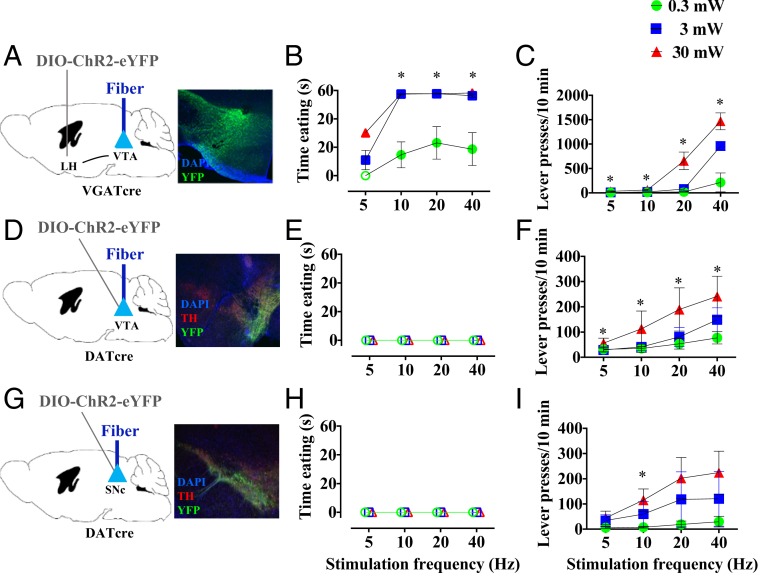Fig. 1.
Optogenetic stimulation of VTA or SNc cell bodies produces reward but does not replicate eating effects of LH-VTA pathway stimulation. (A) VGAT LH-VTA circuit targeting. eYFP-expressing (green) fibers in VTA tissue (magnification: 10×). (B) Photostimulation of VGAT LH-VTA projection significantly produces robust eating in sated animals. (C) VGAT LH-VTA-ChR2 mice support self-stimulation. (D) DAT VTA-ChR2-eYFP (green) and TH staining (red) (magnification: 10×). (E) Photostimulation of DAT VTA does not produce eating in sated animals. (F) DAT VTA:ChR2 mice support self-stimulation. (G) DAT SNc-ChR2-eYFP (green) and TH staining (red) (magnification: 10×). (H) Photostimulation of DAT SNc does not produce eating in sated animals. (I) DAT VTA:ChR2 mice support self-stimulation. *P < 0.05 post hoc comparison vs. null value (B, E, and H) or inactive lever (C, F, and I) Open shapes in eating (B, E, and H) indicate conditions in which no eating was observed.

